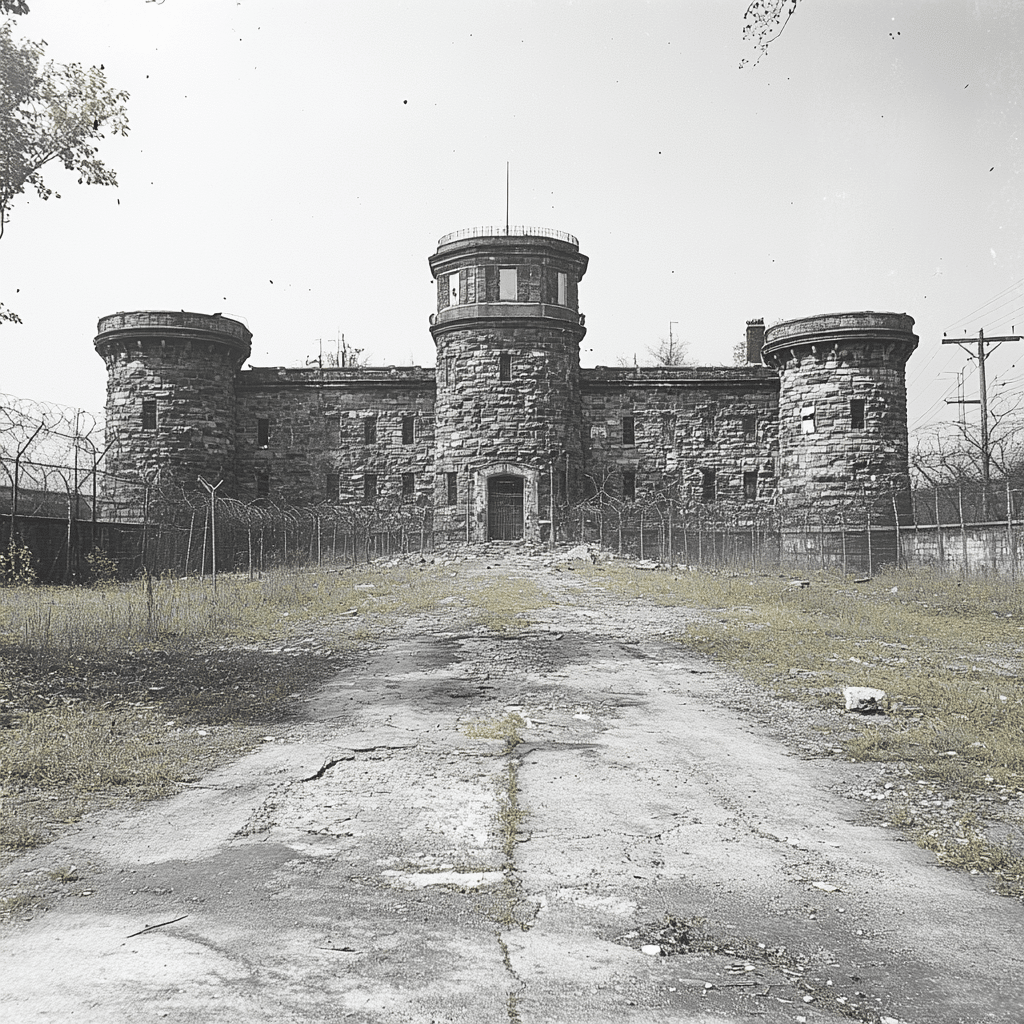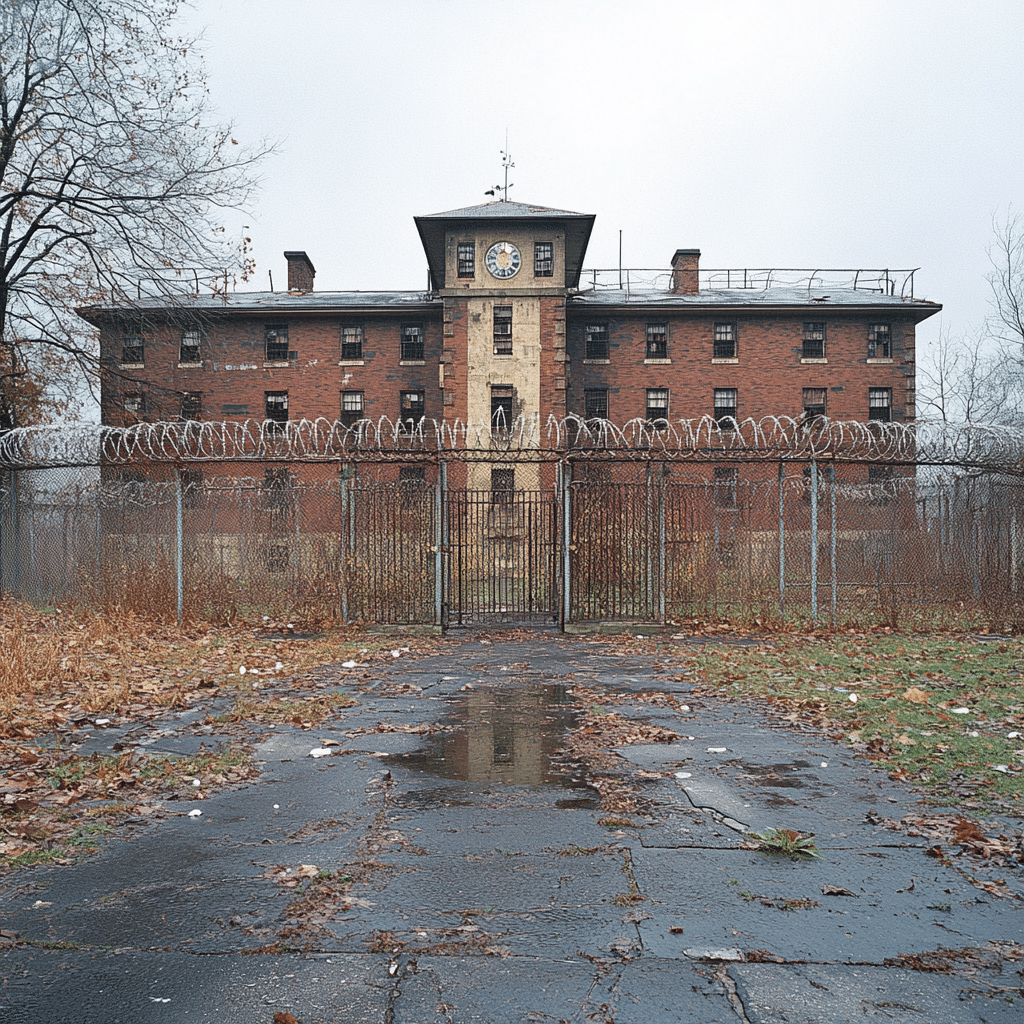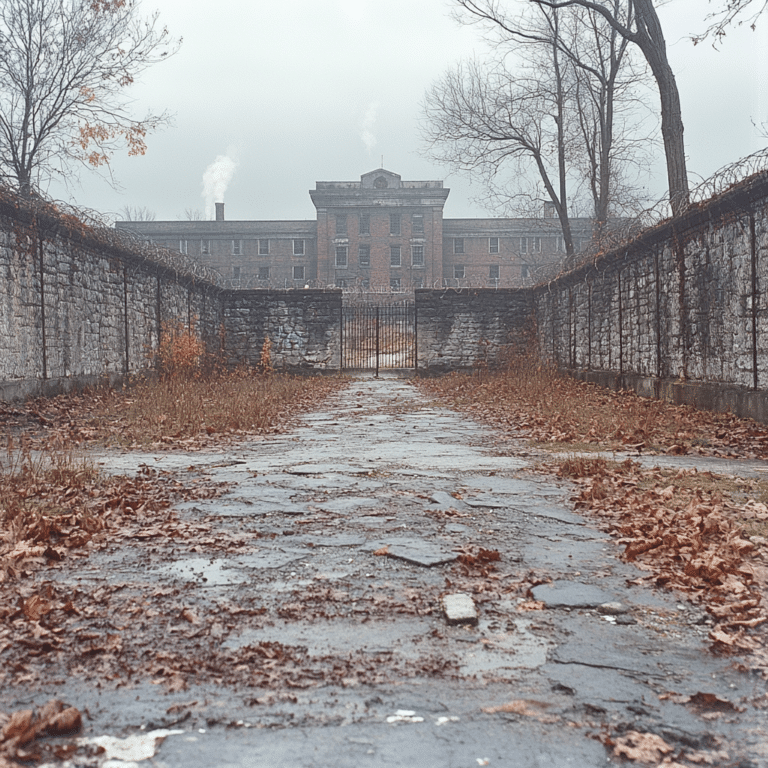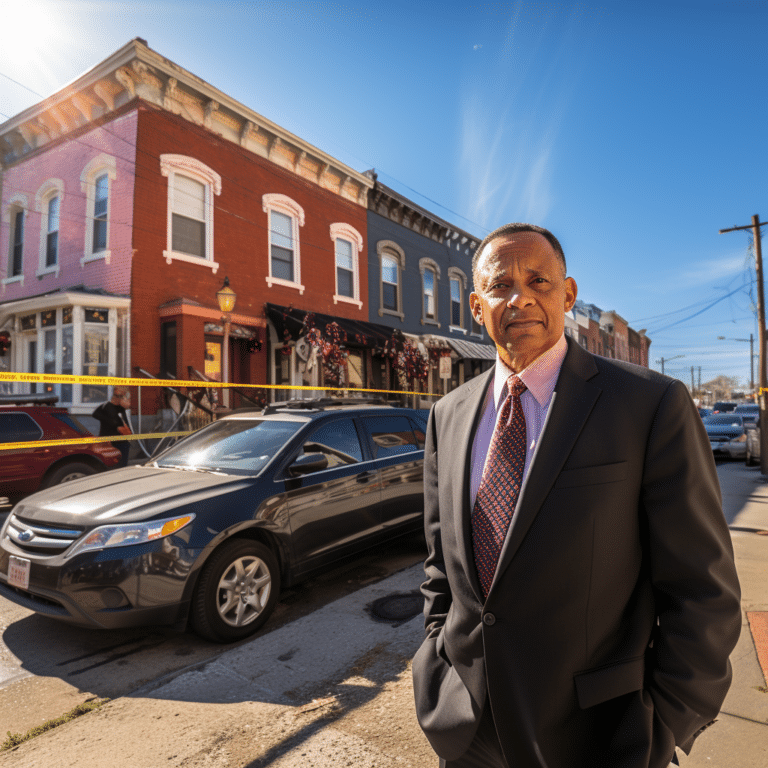Holmesburg Prison: A Historical Overview
Holmesburg Prison, nestled in Philadelphia, Pennsylvania, has an infamous place in American history. Established in 1896, it operated until 1995, becoming notorious for the inhumane conditions and unethical practices within its walls. This dark legacy, replete with tales of cruelty and negligence, contrasts starkly with the prison’s initial goal of reforming inmates. Instead, Holmesburg became a sprawling maze of despair, shrouded in secrecy.
Nestled within this dark history, we find the story of human experimentation, a chapter littered with suffering and grim scientific curiosity. The prison’s aura looms large, haunted by the unethical medical experiments conducted there. By unraveling these stories, we reflect on the lessons and injustices of the past, contemplating their lingering effects on contemporary prison reform and medical ethics.

The Role of Dr. Albert Kligman: Pioneering Yet Controversial
Dr. Albert Kligman stands as a controversial figure in the annals of Holmesburg Prison history. Known for his groundbreaking work in dermatology, including the development of Retin-A, Kligman’s methods were far from ethical. Starting in the 1950s, he conducted numerous experiments on inmates, leveraging their vulnerable status for scientific gain. Kligman’s association with corporate giants like Johnson & Johnson painted a grim picture of exploitative research practices.
Without consent, prisoners were subjected to various dermatological tests, leaving them with lasting physical and psychological scars. Eugene Pepper, one participant, described the relentless burning sensation from a chemical cream experiment. These tests, often dangerous and painful, prioritized potential commercial benefit over human welfare. Despite Kligman’s industrial contributions, his legacy is marred by the severe ethical lapses at Holmesburg.

| Category | Details |
| Name | Holmesburg Prison (also known as Holmesburg Correctional Facility) |
| Location | Philadelphia, Pennsylvania, USA |
| Operational Years | 1896 – 1995 |
| Type | Medium-security penitentiary |
| Architect | John Windrim |
| Notable Aspects | Site of controversial medical experiments |
| Medical Experiments | Conducted from 1951-1974, involving inmate subjects |
| Closure | The prison was closed in 1995 due to outdated facilities |
| Current Status | Occasional use for training by the Philadelphia Police Department |
| Historic Elements | Listed on the National Register of Historic Places |
| Notable Inmates | Herbert Blitzstein (mobster), Russell Wayne Groves (mass murderer) |
| Documentary | “Acres of Skin” book by Allen M. Hornblum details the unethical experiments |
| Usage in Media | Featured in films and TV shows for its eerie and historical ambiance |
Unveiling the Experiments: A Brutal Reality
Between 1951 and 1974, Holmesburg Prison transformed into a sinister laboratory. Prisoners were exposed to a slew of hazardous substances under the guise of scientific progress:
The use of these inmates as human subjects showcased a blatant disregard for their dignity and health. Former prisoner William Blizzard recounted an experiment involving dioxin, a highly toxic compound. The ordeal left him with severe skin lesions and a life of medical complications. These experiments starkly revealed the exploitative underbelly of commercial and military research.

Legal and Ethical Implications: The Fallout of Holmesburg Prison Experiments
The aftermath of these unethical practices saw numerous legal battles. Many former inmates pursued justice, securing compensation and raising public awareness. A landmark case was Allen Hornblum’s “Acres of Skin,” an exposé that highlighted the brutal realities faced by Holmesburg’s inmates. Hornblum chronicled firsthand accounts, pushing for accountability and reform.
These experiments catalyzed significant changes in ethical standards for human subject research in the U.S. Protocols now emphasize informed consent and humane treatment, aiming to prevent such atrocities from recurring. The National Research Act of 1974 was a direct response, establishing stronger safeguards.

Modern Reflections: Current Perspectives and Lessons Learned
Recent documentaries and academic studies have cast a spotlight on Holmesburg’s dark past. Modern medicine and ethics committees have evolved, drawing lessons from these historical abuses. Discussions about real estate lawyers and ethical research often link back to Holmesburg, striving to prevent history from repeating itself.
Prison reform today includes more stringent oversight and higher ethical standards for inmate treatment. Reflecting on these past atrocities, society faces an ongoing challenge to balance scientific advancement with respect for human dignity. Efforts to reform the prison system continue, seeking more humane and transparent policies.

Revisiting the Voices of the Forgotten: Testimonies and Memories
Voices of former inmates and their families have garnered recent attention, shedding light on personal tragedies. Stories broadcasted by National Public Radio conveyed raw, emotional accounts that juxtapose starkly with clinical data. Such testimonies lend a voice to the voiceless, ensuring their suffering isn’t forgotten.
Testimonies from individuals like Leroy Boyd, who participated in radioactive isotope trials unknowingly, underscore the ethical breaches. These narratives underscore the importance of human empathy in medical research and legal justice.
Moving Forward: Ensuring Ethical Justice
Holmesburg’s disturbing history serves as a sobering reminder of human rights violations within the prison system. Advocacy groups such as the American Civil Liberties Union (ACLU) continue to push for ethical treatment and reform. Recognizing past injustices fuels the drive for better oversight and safeguards in both prisons and medical research.
Ensuring that the lessons from Holmesburg resonate today involves perpetual vigilance and activism. Ethical justice demands not just remembrance but proactive steps in safeguarding human rights. It’s a continuing battle to ensure humane treatment and ethical standards in all areas, from medical research to prison reforms.
Epilogue: Was Justice Served at Holmesburg Prison?
Holmesburg Prison’s legacy is a complex tapestry of suffering, scientific progress, legal battles, and ethical reckonings. The prison’s closure in 1995 didn’t end its story. Its dark past remains a crucial chapter in the ongoing discussion about ethical research and prison reform. Holmesburg urges us to confront uncomfortable truths and commit to never repeating them.
The prison’s history may never be fully reconciled, but the conversation it sparks is vital. In remembering Holmesburg, we forge a path that prioritizes human rights and ethical responsibility, ensuring such travesties remain relics of the past.
For further insights into human rights and stories of perseverance, readers can explore Hogando and Harris Crab house.
Holmesburg Prison’s Dark Experimental Past
Holmesburg Prison, often shrouded in controversy, holds some jaw-dropping secrets. Let’s dive into some intriguing tidbits about this notorious facility.
Shocking Experiments at Holmesburg Prison
One particularly chilling chapter in Holmesburg’s history involves unorthodox medical experiments conducted on inmates. From the 1950s to the 1970s, researchers performed dermatological, pharmaceutical, and biochemical tests, often without the proper consent. Prisoners were subjected to all sorts of procedures, often leaving them scarred both physically and mentally, much like the aftermath of a traumatic boat crash.
But wait, there’s more! Did you know that some of these secretive experiments were run by renowned institutions? The University of Pennsylvania’s involvement drew significant criticism and brought issues of ethics in human experimentation to the fore. It’s a startling parallel to companies taking advantage of their positions, not unlike the shady practices one might find while dealing with some Realestate Lawyers.
Celebrity Inmates at Holmesburg
Ever wonder if Holmesburg Prison housed any notable inmates? Turns out, it did. While it might not be as glamorous as a Trump rally, the prison saw its fair share of infamous individuals. Among them was Lorenzo “Catman” Coleman, a Philadelphia mob hitman, who spent his days behind Holmesburg’s high walls plotting and scheming.
Pop Culture and Influence
Holmesburg’s legacy spills over into pop culture too. The eerie atmosphere and tales of human tragedy have inspired various TV shows, movies, and books. Though it’s not the kind of tale that leaves you harried And hungry, it certainly leaves an indelible mark on popular imagination. The stories of confinement, cruelty, and questionable ethics resonate with audiences worldwide, creating a captivating, albeit dark, narrative tapestry.
In conclusion, Holmesburg Prison’s disturbing past is laced with grim tales and shocking truths. Whether discussing unethical experiments or its pop culture impact, Holmesburg continues to be a chilling reminder of a darker side of criminal justice. Its stories remind us of the critical need for ethical oversight and human dignity in all areas of life, just as carefully as one would consider choosing an FHA mortgage for financial well-being.




























